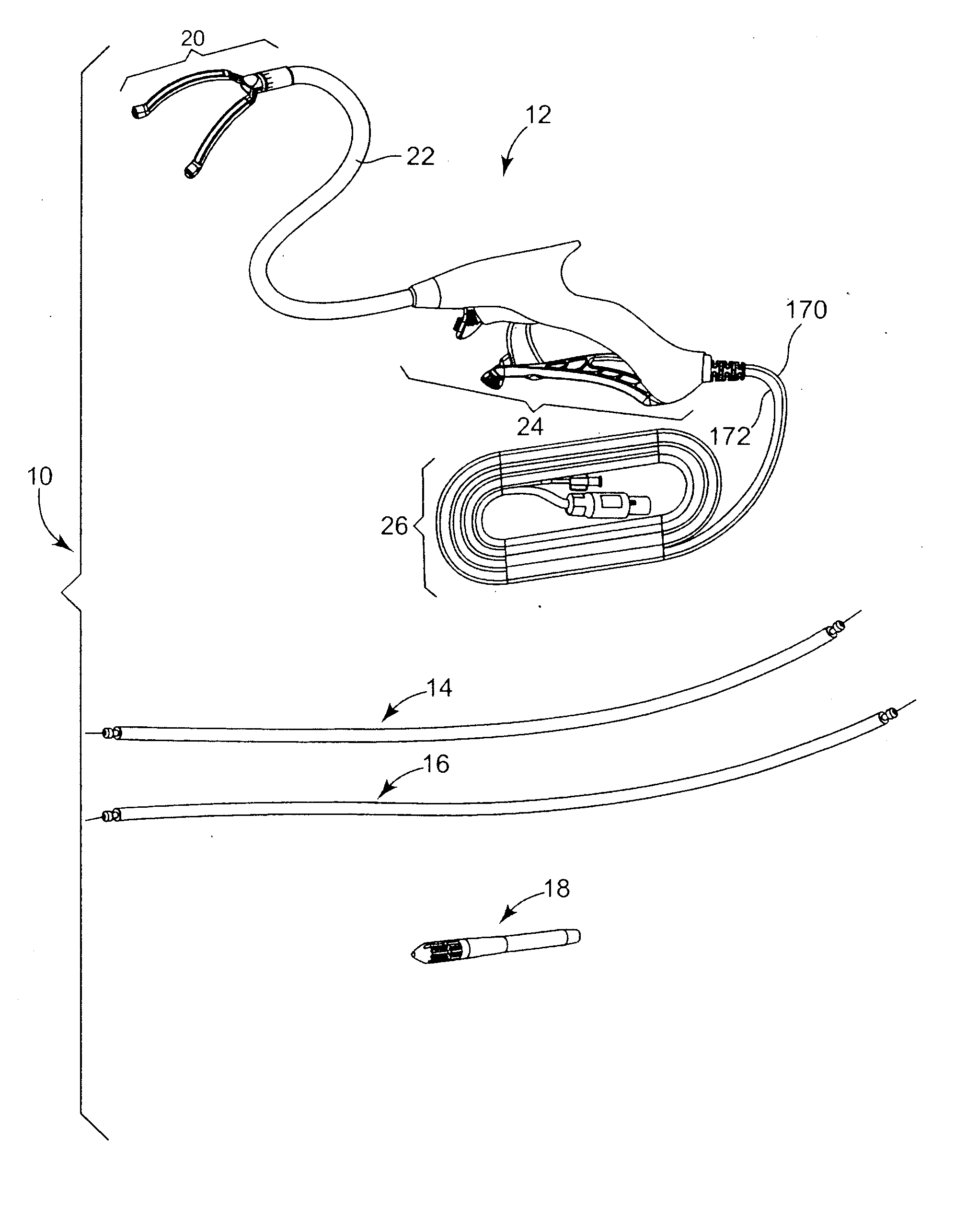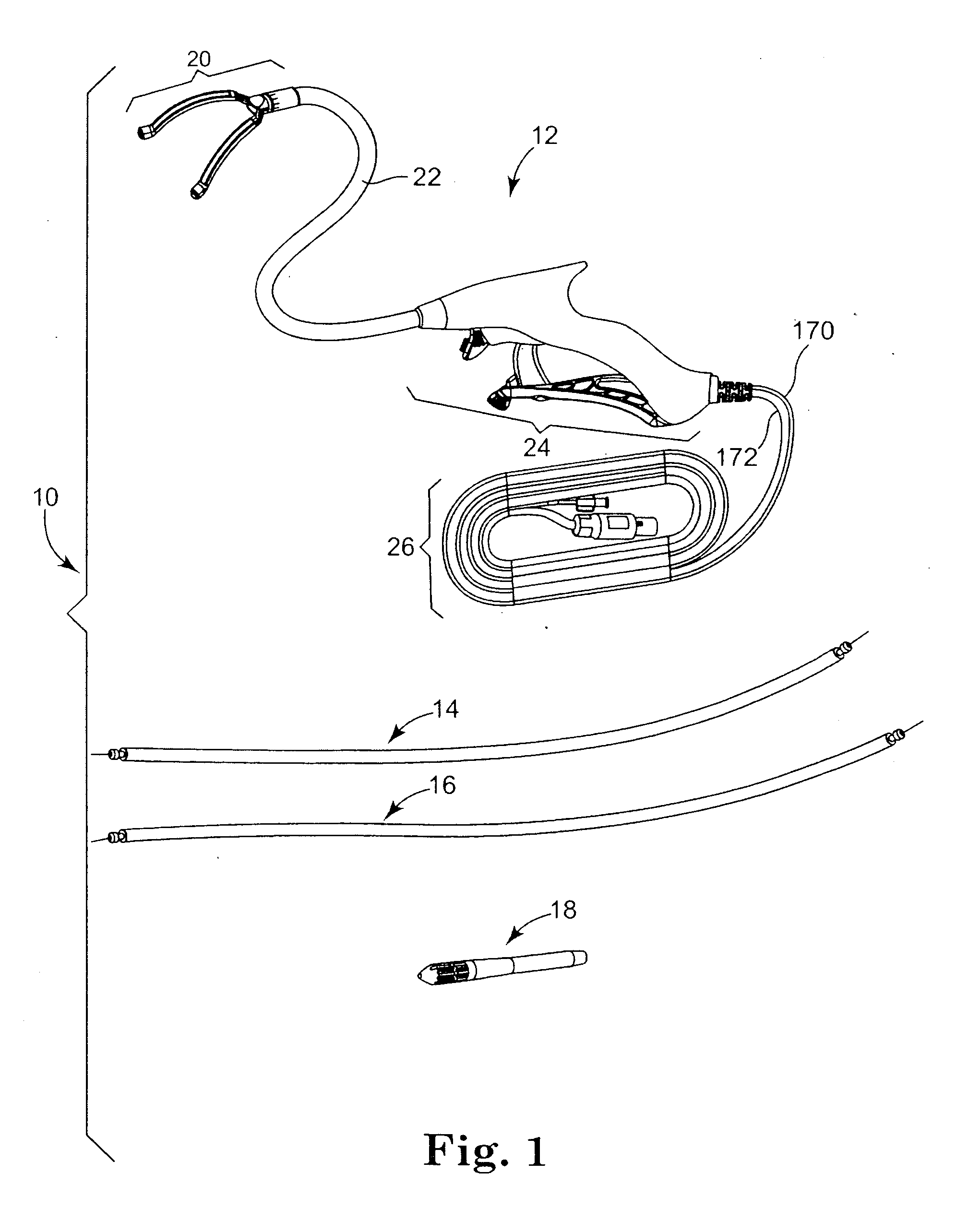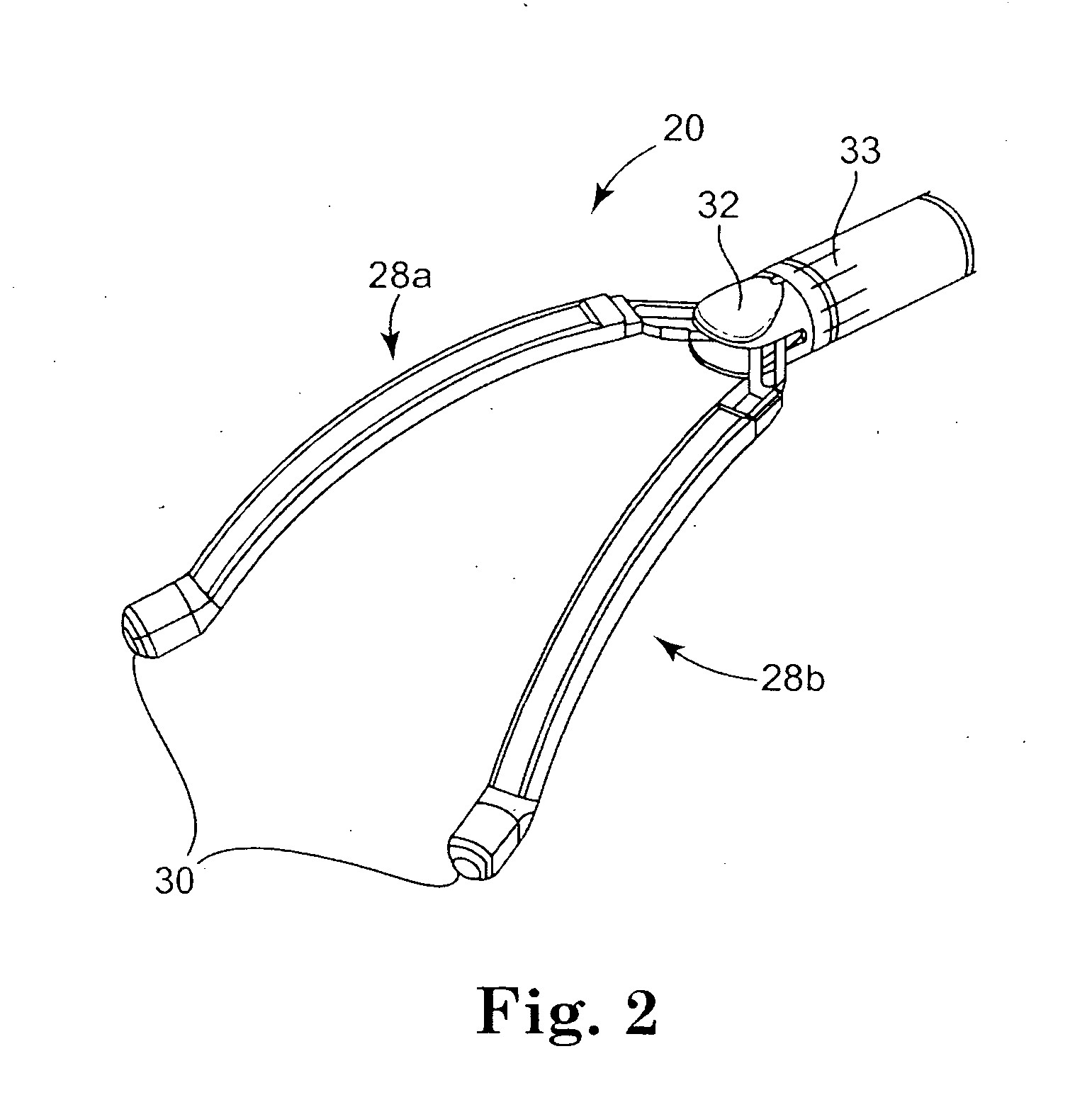Ablation device and system for guiding ablation device into body
a technology of ablation device and body, which is applied in the field of treatment of tissue of patients with ablative energy, can solve the problems of increasing the vulnerability to thromboembolism, significant patient discomfort and even death, and varying levels of congestive heart failur
- Summary
- Abstract
- Description
- Claims
- Application Information
AI Technical Summary
Benefits of technology
Problems solved by technology
Method used
Image
Examples
Embodiment Construction
[0086] In the following detailed description of the preferred embodiments, reference is made to the accompanying figures which form a part hereof, and in which is shown by way of illustration specific embodiments in which the invention may be practiced. It is to be understood that other embodiments may be utilized and structural or logical changes may be made without departing from the scope of the present invention. The following detailed description, therefore, is not to be taken in a limiting sense, and the scope of the present invention is defined by the appended claims.
[0087] With reference to the accompanying figures, wherein like components are labeled with like numerals throughout the several figures, ablation devices, ablation systems, and methods of use thereof are disclosed, taught and suggested by the multiple embodiments for the purpose of ablation of tissue in a subject body. It is understood that any of the ablation devices, systems and methods, in accordance with th...
PUM
 Login to View More
Login to View More Abstract
Description
Claims
Application Information
 Login to View More
Login to View More - R&D
- Intellectual Property
- Life Sciences
- Materials
- Tech Scout
- Unparalleled Data Quality
- Higher Quality Content
- 60% Fewer Hallucinations
Browse by: Latest US Patents, China's latest patents, Technical Efficacy Thesaurus, Application Domain, Technology Topic, Popular Technical Reports.
© 2025 PatSnap. All rights reserved.Legal|Privacy policy|Modern Slavery Act Transparency Statement|Sitemap|About US| Contact US: help@patsnap.com



